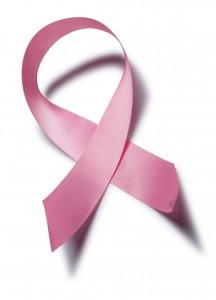 It’s that time again…October…Breast Cancer Awareness Month.
It’s that time again…October…Breast Cancer Awareness Month.
As the world turns pink, I am reminded of how it was when I was growing up. It was the time before the pinking of breast cancer, before the runs, walks, and other fund raising benefits, before it was OK to have TV shows about breast cancer, before social media enabled advocates and those touched by the disease to spread the word about breast cancer to the uninformed.
In those, not so long ago, days few spoke of breast cancer above a whisper, if they spoke about it at all.
When a woman who lived in our apartment building was diagnosed with breast cancer, my mother and other neighbors helped to mind her children when she was recovering from treatment. After she passed, just two years later, her aunt came to help care for the children.
There was no mammography, or any other method to afford her and other women the benefit of early detection. She didn’t have treatment options…no lumpectomy…no simple mastectomy . Radical mastectomy was her treatment; it was the accepted treatment from the late 1800’s to 1955 when doctors began looking at less severe surgeries as alternatives. The lumpectomy came into use a number of years later.
So…how did we get from that day to this? We got here because courageous women, treated for the disease, and those that loved them, as well as dedicated providers in the health care field went public. They dragged breast cancer out of the closet. They advocated, they lobbied, they organized fund raising events to support research for treatments, and to find a cure for the disease. They founded nonprofit organizations to expand awareness, provide services for those in treatment, and to continue to advocate for research and treatment advances.
While some of the pink activities we see during October are neither tasteful or in keeping with the mission of breast cancer awareness, many do reach segments of the community that are not as aware as they need to be about breast cancer. Case in point: During the past year, I did some adjunct teaching at a school for medical arts. The students (20-45 years old ) were actively involved in raising money for a breast walk; the monies were to be donated to a reputable breast cancer organization. I assumed the students, given their medical training, and their interest in the cause, were knowledgeable about the disease. I was wrong.
During a class for 150 women on the myths and facts of breast cancer, I was concerned to find that most of those in attendance had no idea of their risk for breast cancer. Only 10 out of the 150 students had ever had a comprehensive breast exam. While over a third of the students had a history of breast cancer in their families, only four had ever had a mammogram, even though they were over 40 years old.
In the next few days, 15 women approached me and shared their situations. Two had not gone back for follow up care after a suspicious mammogram. Several had a history of breast and ovarian cancer in their families before the age of 40. The rest had lumps they need to be checked but they didn’t have insurance. All were referred for follow up at facilities that accepted Medicaid and/or had programs for the uninsured.
How much awareness is enough awareness? Based on my days in the NYC public hospitals, my recent teaching experience, and the conversations I frequently have with women, once they know what I do…there is no such thing as too much awareness. As long as women embrace the myths about breast cancer that give them a false sense of security, there will be a need for awareness.
When do we need to introduce breast cancer awareness and where? Let’s start in high school, and continue through post secondary schools before young women are less accessible to us as adults in the general population. Our mission with young women is two-fold. First, let’s help them understand their risk of developing breast cancer as young women and as they age. Second, let’s encourage them to carry the message of screening, and other early intervention activities to their mothers, grandmothers and other family members.
Statistics demonstrate the need for reaching out to young women. While young women account for five percent of new breast cancers, their cancers tend to be more aggressive, and frequently reflect the BRCA 1 and 2 genetic mutations, and Inflammatory Breast cancer, a rare and difficult to treat aggressive cancer.
Race is not a factor that might increase a woman’s chance of getting and dying from breast cancer. However, rates for getting and dying from the disease differ among ethnic groups. While white women have a higher rate of developing breast cancer over other ethnic groups, black women have a higher rate of getting the disease under 45 years of age. They also have a higher rate of larger tumors than white women. Their tumors tend to be more aggressive and carry a poorer prognosis. Hispanic women have a lower rate of getting breast cancer, but by the time they are diagnosed their tumors are larger and at a later stage of the disease.
What is No Boobs About It planning to do to promote awareness this October? We are going to raise funds to implement a breast cancer awareness program, Reach Out for Breast Cancer Awareness, that targets young women in post secondary school programs, and older women in community centers where women gather for educational and social programs. The awareness program will have ethnically and racially diverse, age appropriate, breast cancer survivors share their stories, make women aware of their breast cancer risk, and link them to resources in their communities.
 It’s that time again…October…Breast Cancer Awareness Month.
It’s that time again…October…Breast Cancer Awareness Month. 
